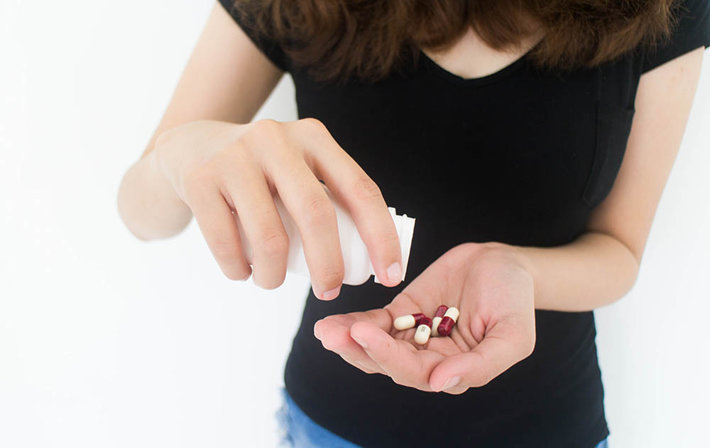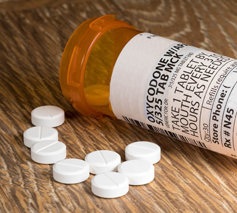Prescription Drugs FAQ

What is Prescription Drug Abuse?
Prescription drug abuse occurs when someone takes a medical drug that was not prescribed for them or they take it in a different manner than it was supposed to be taken. Most people who abuse a prescription drug take more of the drug than a person who takes it for medical purposes. Abusers will build up tolerances to most drugs, meaning that it takes more and more of a drug to produce the same effect. After a while, the abuser may be taking much larger doses than normal. And a person abusing a drug may change its form, for example, they may crush a pill or dissolve a drug so they can inject it. This helps the drug reach the bloodstream faster and have faster effects, such as euphoria and a sedated feeling or perhaps increased confidence and increased activity, depending on the type of drug being abused.
What Types of Drugs are Being Abused?

The most common drugs being abused are the opioids, central nervous system depressants and stimulants. Opioids include such as OxyContin, Vicodin, Lortab and Percocet. These are brand names. The generic names of commonly abused drugs include oxycodone, hydrocodone and morphine. Central nervous system depressants are prescribed to alleviate tension, anxiety and sleep disorders. They include brand names such as Nembutal, Valium, Librium, Xanax and Halcion. The generic names of these drugs are mephobarbital, diazepam, and alprazolam, among others. Stimulants include amphetamines and methylphenidate, or Adderall and Ritalin, both prescribed for Attention Deficit Hyperactivity Disorder. Cough medications with dextromethorphan or codeine are also frequently abused.
In What Parts of the World is Prescription Drug Abuse a Problem?
Prescription drug abuse is a global problem, particularly in developed and developing countries. As treatment demand for heroin decreases in many countries, treatment demand for help with prescription opiates increases, particularly in the US and Canada.
In South America, where heroin abuse is still low, prescription opioids constitute the main problem with 0.5 percent of the population suffering from this type of abuse. In Australia as well, the abuse of prescription opioids including morphine, oxycodone, and buprenorphine is common. Australia has fewer than 100,000 abusing heroin each but more than 450,000 abusing opioids and benzodiazepines.
The UN reports that Germany is also experiencing problems with high numbers of prescription drug abusers. An estimated 1.4 and 1.9 million people are addicted to these drugs in Germany.
Prescription drug abuse fluctuates in other countries, with far-flung corners such as Namibia and Madagascar also seeing high abuse of some types of prescription drugs.
- http://www.unodc.org/documents/wdr/WDR_2010/World_Drug_Report_2010_lo-res.pdf
- http://www.reuters.com/article/2010/02/24/us-narcotics-un-idUSTRE61N24B20100224
- http://www.smh.com.au/news/national/australia-in-legal-drug-abuse-crisis/2007/07/21/1184560110521.html
How do people who are abusing prescription drugs acquire them?
In many cases, adults addicted to prescription drugs began using them legitimately for physical conditions that warranted medication. When the body develops a tolerance, more and more medication is needed to keep aches and pains away, and when the patient asks for higher dosages, medical doctors may limit medication or even withdraw the prescription. This may drive the user to start going from doctor to doctor (“doctor shopping”) to acquire enough drugs to maintain what now feels like normalcy to them. Others may forge prescriptions.
Most young people abusing prescription drugs get them from medicine chests they have access to or from friends who are able to get their hands on pills. Something as innocent as using the bathroom at a friend’s house may result in a young person finding a pill bottle they can steal a few pills from. And there is a thriving black market in prescription drugs where unscrupulous people acquire prescription drugs from unethical doctors or from a country where they are not illegal and sell them for huge profits.
What Age Groups Are Abusing Prescription Drugs?
Prescription drug abuse occurs in all age groups but especially in America, young people are particularly susceptible. In 2008, nearly two million young Americans between the ages of 12 and 17 abused prescription drugs. This high statistic means that prescription drugs are one of the most commonly abused drugs, with only alcohol and marijuana being abused more frequently. Every day, approximately 2,000 US teenagers abuse a prescription drug for the first time.
Why Do Young People Abuse Prescription Drugs?
Surveys indicate that young people abuse prescription drugs to help them alleviate the stress of school, social or family problems. Peer pressure also plays a role, as in when a young person sees those around him or her seeming to enjoy themselves and feels that they should join in so as to “fit in” better.
The fact that prescription drugs are freely prescribed by physicians can cause some young people to feel that they are safer to abuse than prescription drugs but the fact is that many of them are just as addictive of street drugs.
Are There Prescription Drugs in American Schoolyards?
February 3, 2011, at Stewarts Creek Middle School in Tennessee. March 18, 2011, at Frederick Roehm Middle School in Ohio. March 22, 2011, at Fluvanna Middle School in Virginia. April 29, 2011, at Rocky Heights Middle School in Colorado. May 12, 2011, at Perry Meridian Middle School in Indiana. Each of these middle schools reported prescription drugs being distributed on the school grounds. Students involved were sometimes sent to the hospital as a precaution, some students were suspended and others were expelled.
According to the National Center for Substance Abuse and Addiction at Columbia University (CASA), a third of our middle schools are places where drugs are being bought, sold, stored or consumed, as are two-thirds of our high schools. This is based on CASA’s 2010 survey of teens and parents. Some of the drugs being found are definitely prescription drugs and the reports of these discoveries are increasing.
- http://www.casacolumbia.org/templates/publications_reports.aspx
- http://www.dailyprogress.com/news/fluvanna-probes-prescription-drug-case-at-middle-school/article_e77fd430-8db5-5642-a8a1-77ac95602c78.html
Are Prescription Drugs Sending People to Drug Rehabilitation Centers?
Around the world, millions of people are finding drug treatment centers to get help with addiction to prescription drugs. In Madagascar, depressant drugs account for 39 percent of treatment admissions. In Namibia, methaqualone is responsible for 61 percent of admissions. Sedatives in Kuwait are responsible for 16 percent, hypnotics, and sedatives for 22 percent of admissions in Hungary and 31 percent in Northern Ireland.
Can an Overdose of a Prescription Drug be Fatal?
As the number of prescriptions for opioid analgesics has skyrocketed worldwide, the volumes of abuse and overdoses have followed. From 1999 to 2006 in the US, the number of people dying from opioid analgesic overdoses more than tripled from 4,000 deaths to 13,800. From 1999 to 2016, more than 200,000 people died in the U.S. from overdoses related to prescription opioids. In 2016 overdose deaths involving prescription opioids were five times higher than in 1999.
- http://www.unodc.org/documents/wdr/WDR_2010/World_Drug_Report_2010_lo-res.pdf
- https://www.cdc.gov/drugoverdose/data/overdose.html
Once a Person is Addicted to Prescription Drugs, is Recovery Possible?
Prescription drug addiction can be recovered from, just like addiction to any other drug. There are a few drugs that will require medical assistance to taper down the dosage as bodies may become so dependent on the drug that a gradual approach is needed. In the remainder of situations of prescription drug addiction, the addicted person can start his or her recovery at a drug rehab center.
Tapering off drugs is called a medical detox. A medical detox facility reduces the dosage under medical supervision. Once the drug has been tapered down to the point where there is no danger to the addicted person to fully withdraw from it, then the person can go to the drug rehabilitation center chosen by self or family.
Can a Person Recover from Prescription Drug Abuse at One of Narconon Centers?
There are people recovering from prescription drug addiction at every Narconon drug and alcohol rehabilitation center around the world. In some Narconon centers, the number of people entering drug rehab due to prescription drug addiction has been increasing to the point where it may be half of those coming in. Recovery from any addiction takes work and is best done in a long-term, in-patient drug rehab where the person can concentrate on his or her recovery, far from the dealers and drug-using friends they left behind. The long-term, in-patient Narconon drug and alcohol recovery programs offer those in recovery a drug-free environment in which to construct a new, permanent, sober life.
Related articles:
 ®
®